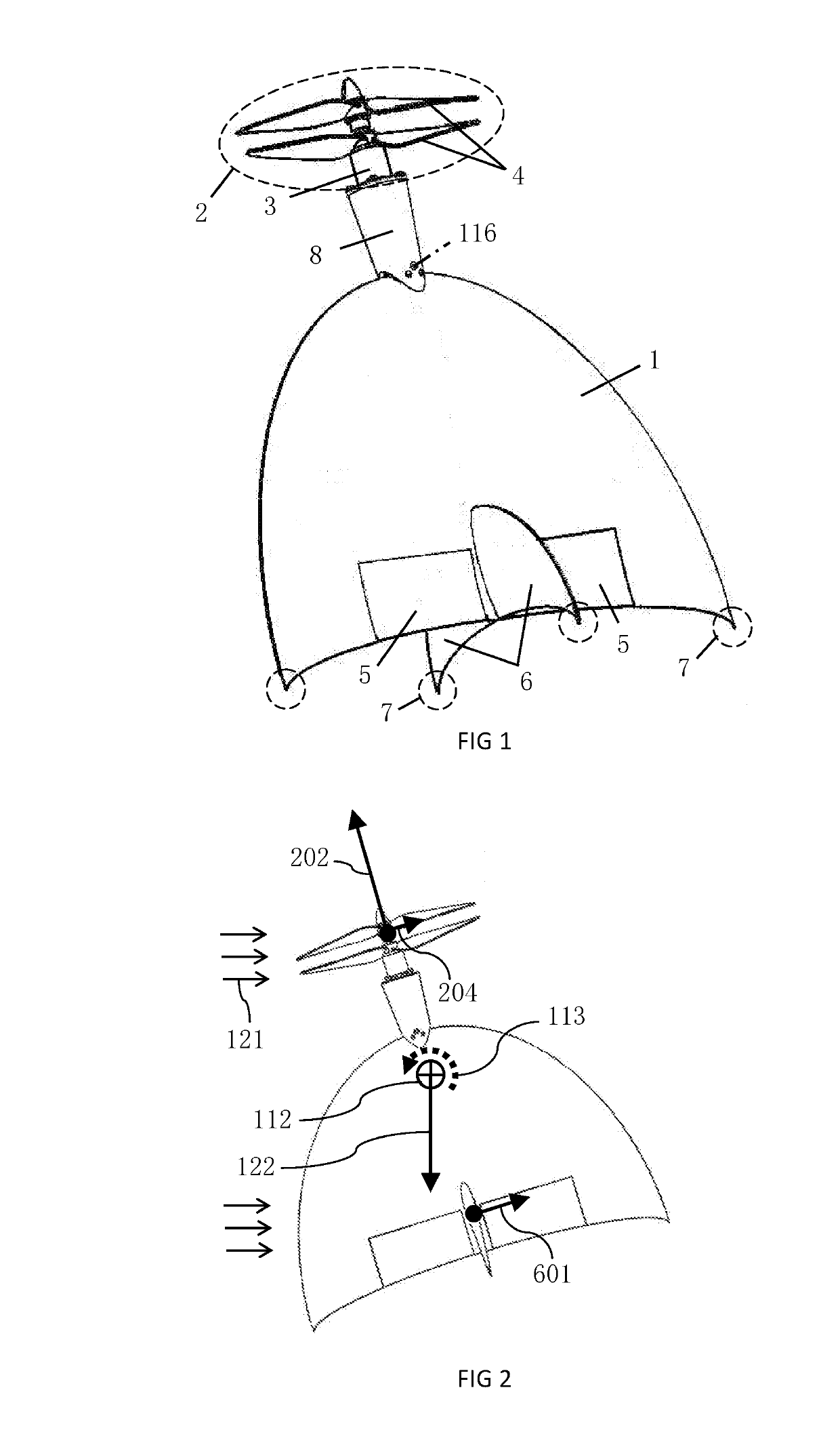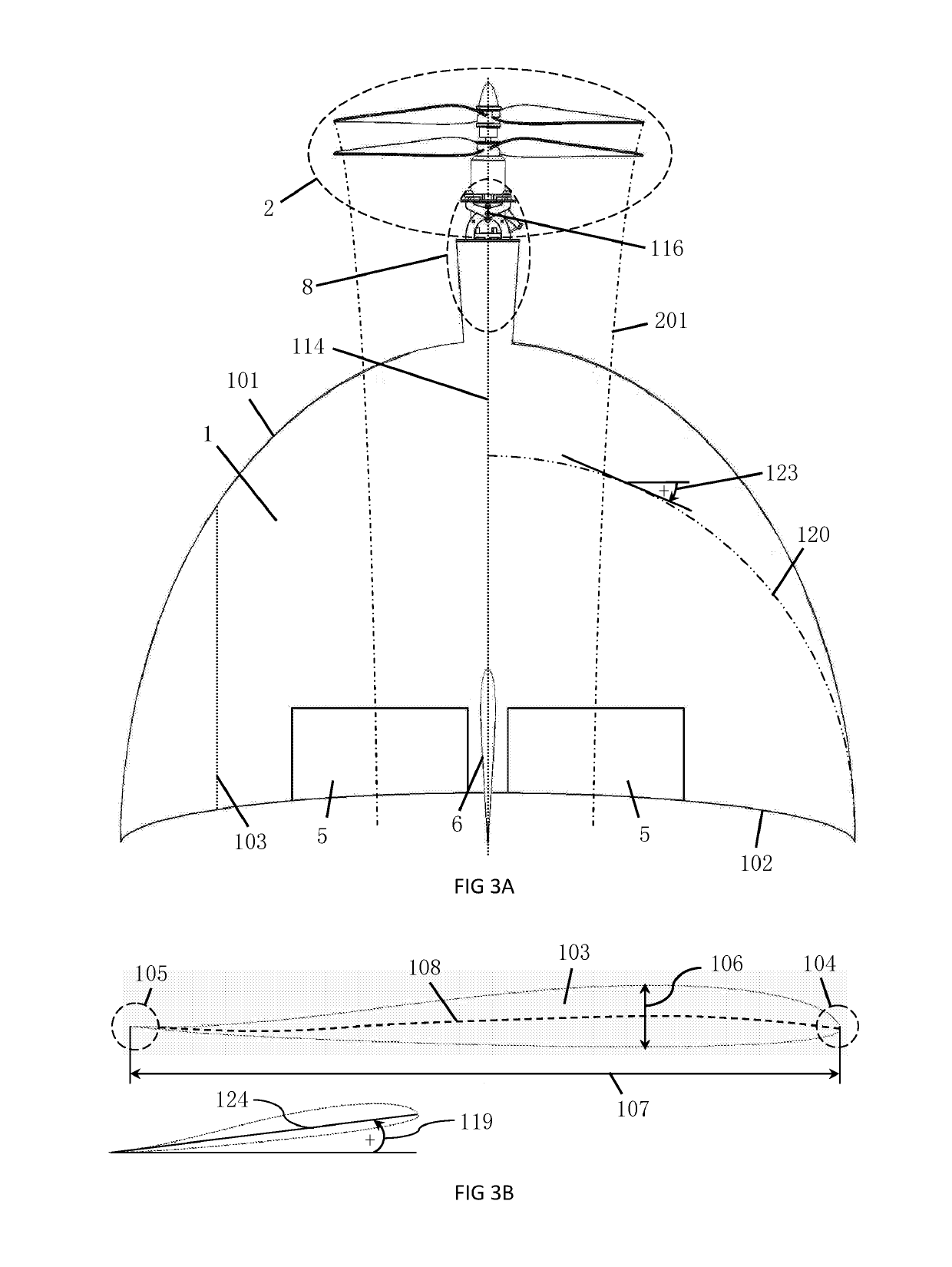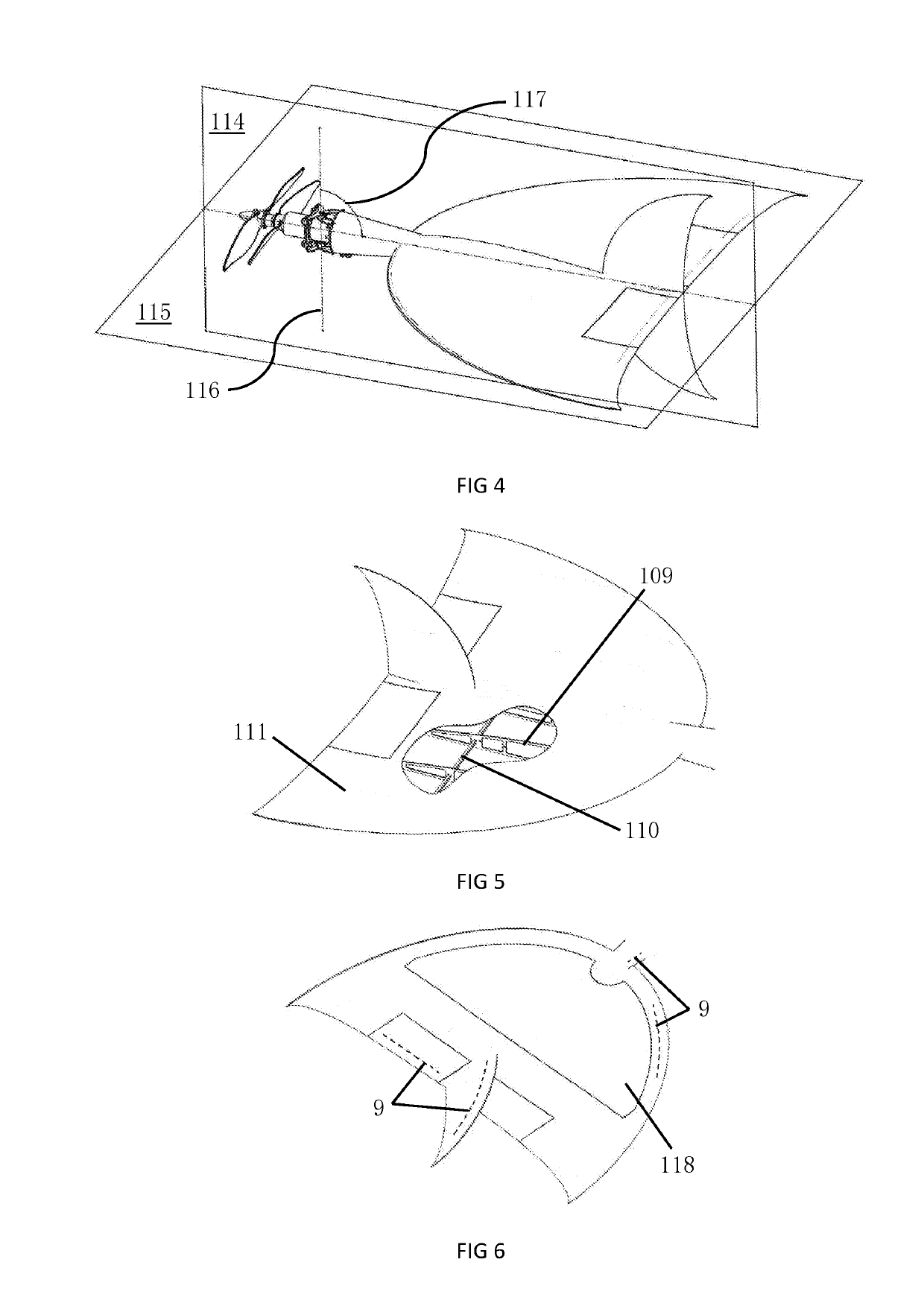Aircraft and aircraft control system
a control system and aircraft technology, applied in the direction of propellers, vertical landing/take-off aircraft, transportation and packaging, etc., can solve the problems of poor rf characteristics and higher strength-to-weight ratio of carbon fiber, and achieve the effects of less gust-sensitive, improved controllability, and reduced weigh
- Summary
- Abstract
- Description
- Claims
- Application Information
AI Technical Summary
Benefits of technology
Problems solved by technology
Method used
Image
Examples
embodiment a
[0095]An example embodiment of the control system is provided with various features and parts, as described in BRIEF SUMMARY OF THE INVENTION. For Embodiment A, the mount (8) is a nacelle-like structure that protrudes forward from the root leading-edge of the fixed-wing (1), as seen in FIG. 1. When the mount (8) is in its neutral position, it lies on the plane of symmetry (114), and it may or may not be coaxial with the root chord-line of the fixed-wing (1). A preferred structure for the mount (8) is depicted in FIG. 14. It comprises: a plurality of frames (808), a plurality of ribs (809), a plurality of stringers (810), and skin (811) that can support loads, as seen in FIG. 16. The stringers (810) pass through corresponding holes cut into the ribs (809). Protrusions on the frames (808) pass through corresponding holes in the aftmost rib (809). The stringers (810), ribs (809), and frames (808) are joined together, preferably with adhesive. Skin (811) is placed around the ribs (809) ...
embodiment b
[0103]Another example of the control system is provided in Embodiment B, which follows from the discussion in BRIEF SUMMARY OF THE INVENTION. Embodiment B is depicted in FIG. 18. It can be used when Embodiment A is inappropriate to a given application. Rather than rotating about a pin (803) near the leading-edge of the wing (101) the hinge axis (116) is moved until it is nearly coincident with the thruster's (2) center-of-mass. As a result, high rotational accelerations about the hinge axis (116) can be achieved using a smaller and lighter-weight servo (804) that better-resists breaking during tip-overs and potential skid-landings. Yaw-jerking becomes negligible as reactionary moment about the fixed-wing (1) is minimized.
[0104]For Embodiment B the mount (8) comprises an aft mount (813) and a forward mount (817), as seen in FIG. 19. The aft mount (813) is fixed to the aircraft. The aft mount (813) comprises an aft mounting plate (832), which is located on a fixed-part of the aircraft...
embodiment b1
[0110]It is convenient to manufacture the mount (8) by cutting components out of a flat plate of material using a CNC machine. This allows materials with high strength-to-weight ratios to be used, including fiberglass and carbon fiber. Thin flat material oriented approximately parallel to a horizontal plane is not very resistant to bending from applied vertically-oriented forces. Therefore, supports (824) that lie within planes approximately perpendicular to the horizontal plane (115) may be included. The supports (824) can help the plates (814, 815, 818, 819) resist bending stresses, as seen in FIGS. 19-21. Supports (824) connect-to, or are integrated-with, a mount (813, 817) and its plates (814, 815, 818, 819).
PUM
 Login to View More
Login to View More Abstract
Description
Claims
Application Information
 Login to View More
Login to View More - R&D
- Intellectual Property
- Life Sciences
- Materials
- Tech Scout
- Unparalleled Data Quality
- Higher Quality Content
- 60% Fewer Hallucinations
Browse by: Latest US Patents, China's latest patents, Technical Efficacy Thesaurus, Application Domain, Technology Topic, Popular Technical Reports.
© 2025 PatSnap. All rights reserved.Legal|Privacy policy|Modern Slavery Act Transparency Statement|Sitemap|About US| Contact US: help@patsnap.com



